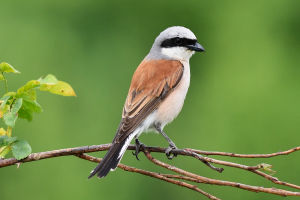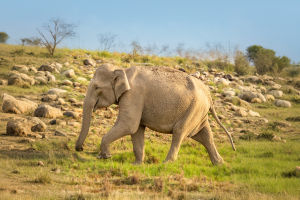
Have you ever spotted a furry creature with a long tail and a curious face wandering in the woods?
Today, we’re diving into the fascinating world of the white-nosed coati — a clever and lively animal that has found a way to thrive from dense forests to towering mountains.
Where We Can Find the White-Nosed Coati
We can spot white-nosed coatis across a wide stretch of the Americas. They feel at home in various woodlands, including lush rainforests and shady forests. These adorable animals roam from sea level all the way up to elevations of about 11,500 feet (around 3,500 meters). Their northernmost neighbors live in southeastern Arizona and New Mexico, while their southern relatives reach all the way to Panama. It's amazing to think how well they adapt to such different environments!
What the White-Nosed Coati Looks Like
When we get a closer look, we notice that white-nosed coatis have charming features. Their fur usually comes in shades of dark brown, reddish, or yellow. Their eyes seem darker and more striking, while their muzzle, chin, and throat are a soft pale gray — a perfect contrast.
A full-grown coati measures about 3.6 to 3.9 feet long (1.1 to 1.2 meters), and that includes their impressive tail, which alone stretches 20 to 25 inches (50 to 65 centimeters)! They typically weigh between 11 to 20 pounds (5 to 9 kilograms). Although their tails can't grab onto things, they play a huge role in helping them balance, especially when climbing.
How the White-Nosed Coati Lives Day to Day
Life for a white-nosed coati is full of adventure. We would find that they enjoy a varied diet — from small vertebrates and insects to fruits, eggs, and even the occasional bit of carrion. While they are excellent climbers thanks to their strong limbs and balancing tails, they spend much of their time on the ground, foraging and exploring.
In the wild, they have to stay alert. Predators such as boas, birds of prey, big cats, and tayras keep them on their toes. Interestingly, coatis have grown quite accustomed to humans. Sometimes, we might even see them venturing into campsites and dumpsters looking for snacks! They are clever little beings, and research shows they are quick learners.
Social Lives and Habits of the White-Nosed Coati
When it comes to their daily rhythm, most white-nosed coatis are active during the day. At night, they retreat to specific trees where they rest safely. However, if needed — like in areas with a lot of human activity or hunting pressure — they are smart enough to switch to a nighttime schedule.
Adult males usually prefer a solo life, while females and young males form lively groups. These groups can be quite social, especially when it comes to taking care of the little ones. When we watch them, we often see young coatis wrestling and playing — a natural way for them to develop strength and skills. Even the adults sometimes bicker over food, showing us just how spirited and lively these creatures really are.
Let’s Meet Them in the Wild!
If we are lucky enough to trek through the forests of Central America or the southern parts of North America, we might just catch a glimpse of these curious creatures in action. Whether they are playfully climbing trees or carefully sniffing around the forest floor, white-nosed coatis remind us how vibrant and clever nature can be.
Next time we’re out exploring, let’s keep our eyes open — the white-nosed coati might just be peeking out from behind a tree, ready to share a little moment of wonder with us.
Lykkers, have you ever seen a white-nosed coati before? Or would you love to meet one in the wild someday? Let’s chat about it — we’d love to hear your stories!
The Wonders of the White-Nosed Coati
Video by WildPaws Planet


